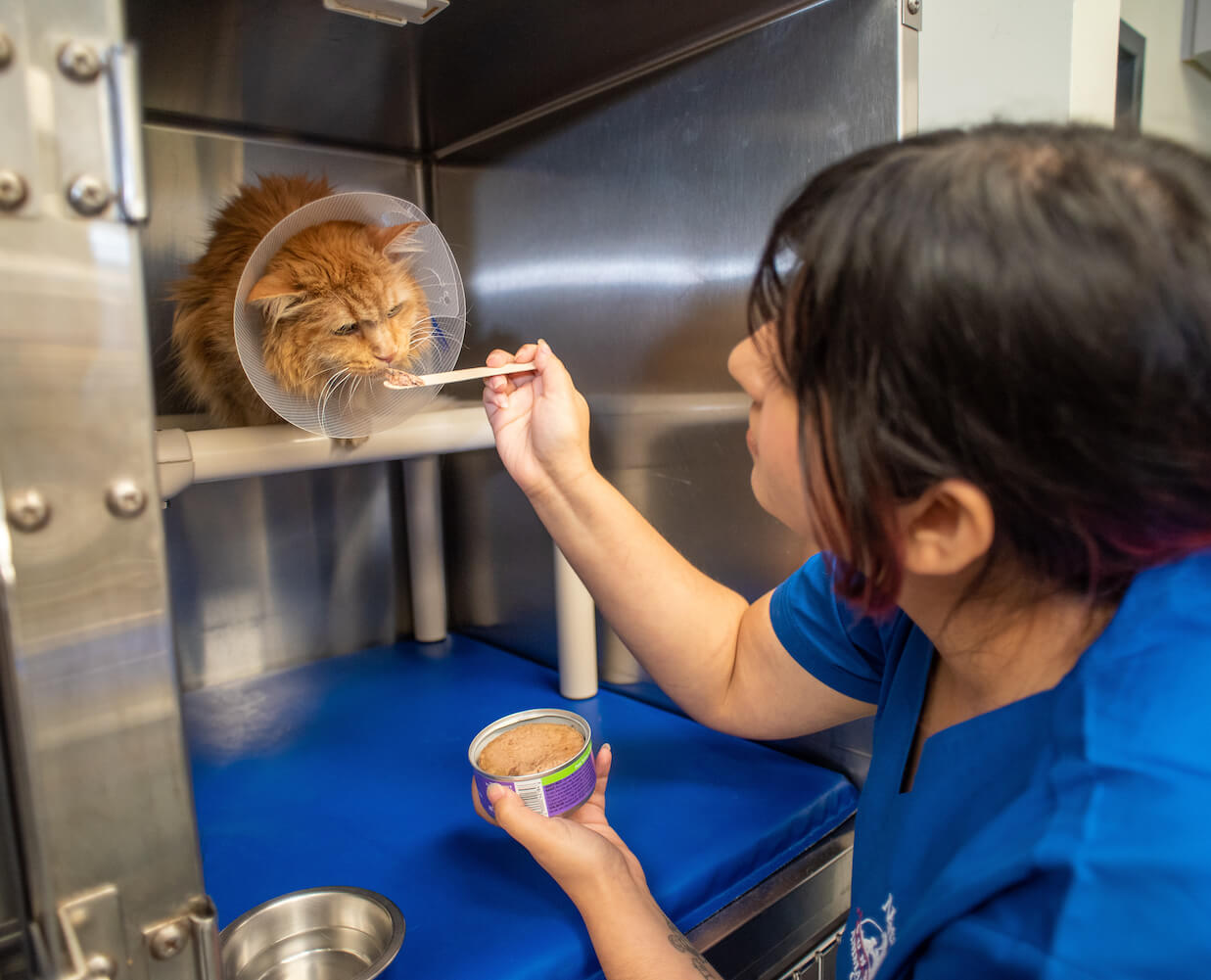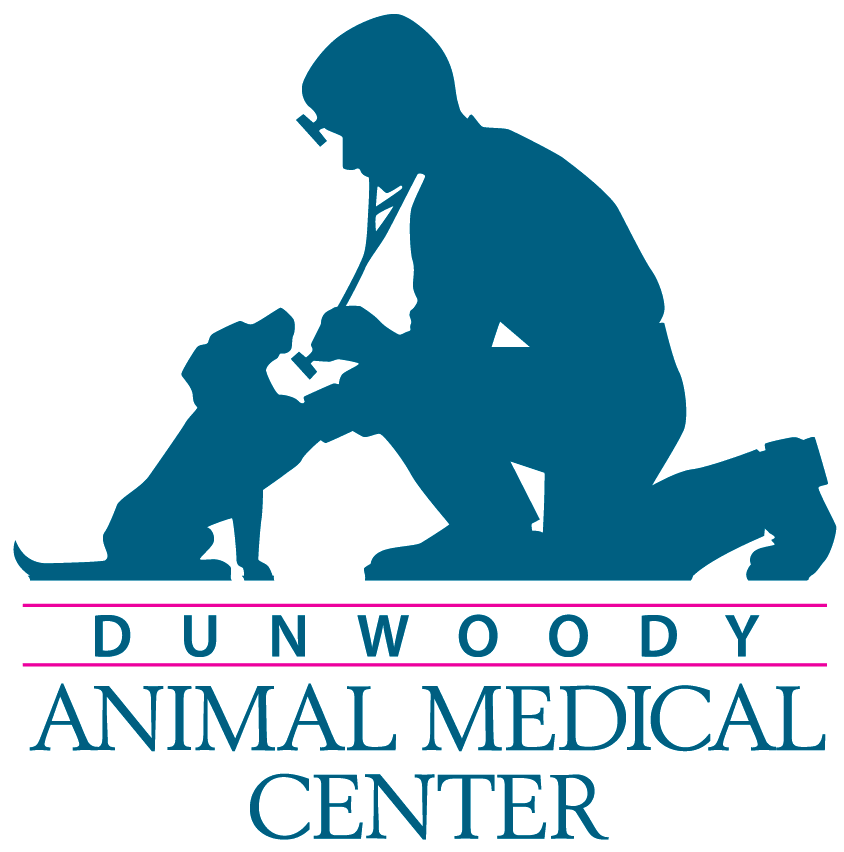 Our highly skilled doctors are experienced in performing a broad spectrum of surgical procedures, using the most up to date techniques and always adhering to the strictest standards of quality care.
Our highly skilled doctors are experienced in performing a broad spectrum of surgical procedures, using the most up to date techniques and always adhering to the strictest standards of quality care.
At Dunwoody Animal Medical Center, our top priority is to keep your pet as comfortable and pain-free as possible while also making sure he or she remains safe at all times while in our care. All of our surgical patients receive careful pre-surgical screening, which helps us to identify any potential risks so we can prepare for them ahead of time. This screening also helps us to develop a customized pain management plan that is tailored to your pet’s unique needs and risk factors. The day of your pet’s surgery, we will be waiting to greet you both, assist you in completing any necessary paperwork and get your pet settled in. This is a great time to bring up any questions or concerns that may be weighing on your mind so that we can discuss them with you and help you feel confident leaving your loved one in our care.
During surgery, regardless of whether it’s a routine spay or neuter or a more advanced procedure, your pet will be continuously monitored by our experienced doctors and veterinary staff in our AAHA certified surgical suite. From intravenous fluid support to thermoregulation, we will provide the optimal care for each patient while closely monitoring for any variations in their vital signs. When your pet’s surgery is complete, we will gently move them to our quiet, comfortable recovery area. There we will continue monitoring to ensure a safe and peaceful transition out of anesthesia and back to full awareness. Rest assured that your pet will awake to the familiar faces and gentle voices of our dedicated care team. When you arrive to bring your pet home, we will spend some time going over our aftercare instructions, any medications to prevent infection and/or to manage your pet’s pain at home, and review a plan for your pet’s recovery at home.

Some of the most common surgical procedures we perform are:
Spaying is the surgical altering of your female dog so that she cannot get pregnant. Aside from the very real pet overpopulation problem, there are some valid health reasons for spaying female dogs, including reducing and, in some cases, eliminating the risk of certain types of infections and cancers. Together, you and your doctor will determine at what age your pet should be spayed. The timing of the spay has come under some scrutiny in the past few years. Where we used to recommend spaying all females prior to their first heat, or around 7 months of age, we now feel it is best to wait until after 1 year of age for medium, large, and giant breed dogs. Smaller breeds are still fine to spay prior to a first heat, however, even these dogs may gain some benefit from waiting as well. We offer both traditional and laparoscopic spays and we can discuss this more fully with you at your initial puppy visits so you can make the best decisions for your pet.
Neutering is the surgical altering of your male dog so he cannot impregnate other dogs. Aside from the very real pet overpopulation problem, there are some valid health reasons for neutering male dogs, including reducing and, in some cases, eliminating the risk of certain types of behaviors and cancers. Together, you and your doctor will determine at what age your pet should be neutered. Just as in spaying, the timing of neutering male dogs has come under review by the veterinary profession. We feel that the larger the breed, the more beneficial it is to delay neutering until 10 months for small breeds and up to 18 months for the large and giant breed. The main benefit that we feel is derived from waiting is a better overall musculoskeletal conformation, which may decrease the tendency towards certain orthopedic dysfunctions or injuries.
Also known as minimally-invasive surgery, laparoscopic procedures involve one or two very small incisions. A slender video scope is inserted into the abdomen through one of the incisions, and the surgical instruments are inserted through the other. Laparoscopic procedures often take a bit longer than traditional procedures, primarily because it demands more precision and less aggressive manipulation of tissues and organs. The smaller incisions and advanced blood vessel sealing result in less bleeding and trauma as well as dramatic reduction in post-operative pain. A laparoscopic procedure also leads to a faster recovery time and less post-operative restrictions, making laparoscopic surgery an attractive alternative for active dogs.
Laser surgery requires a specialized machine that emits a safe yet powerful laser beam. As a surgical tool, this laser beam essentially replaces the standard scalpel. Because the laser beam is comprised of highly concentrated energy and a specific light wavelength, it is capable of producing a wide array of beneficial biological effects, including highly accurate and precise incisions within targeted tissues, elimination of bacteria in and around the surgical site, cauterization of blood vessels and sealing of nerve endings. Laser surgery tends to improve outcomes, reduce post-operative pain, speed healing, and reduce the risk of complications.
Gastric Dilation-Volvulus (GDV) is a very serious health risk for many large breed or deep-chested dogs and is commonly referred to as “bloat.” For reasons that are still not known, the stomach will quickly begin to fill with gas and begin to rotate in the abdomen. If not detected and treated quickly, GDV is routinely fatal. This can happen over a period of hours. A gastropexy is a surgical procedure that permanently attaches the stomach to the inside of the abdominal wall in order to prevent shifting and twisting. A gastropexy effectively prevents dilation and rotation in up to 95% of dogs.
Volvulus is a very serious condition with a high mortality rate. A gastropexy is often an easy way to virtually prevent GDV in a young, healthy dog of a high-risk breed. The procedure can be performed on its own but is usually done concurrently with a spay or neuter. Because of the VAST difference in incision size and recovery time, we only perform gastropexies laparoscopically.
It can be scary to hear the word “mass” or “growth” when discussing your pet’s health, however masses are a fairly common occurrence in pets and can often be quickly and easily dealt with - when caught early. Depending on your pet’s diagnosis, your veterinarian may recommend surgical removal of the mass. This prevents the mass from causing problems like growing too large, damaging surrounding tissue or spreading to other places within the body. With any mass removal surgery, we will recommend that the removed tissue is sent to our lab, so our pathologists can examine the growth and determine if surgery was curative or if any other action needs to be taken.
When an animal consumes an object that cannot pass through the gastrointestinal tract, that object is a foreign body. This can result in systemic toxicity, inflammation of the abdominal lining, infection, or obstruction of the intestinal tract if it stays lodged inside the animal. In certain cases, the object may require surgical removal. Before the operation, the vet will perform a physical examination and complete x-rays (or other imaging scans) to determine the safest approach to remove the object. Once the foreign body is removed, the site will be examined and any necessary surgical repair will be completed.
A cystotomy is a surgical procedure for dogs and cats that requires the opening of the bladder. There are multiple reasons a veterinarian may perform a cystotomy, but the most common are to treat an identified problem such as a tumor, removal of bladder stones, or urethral obstructions, or to collect a tissue sample for biopsy. The procedure is performed under general anesthesia, so your pet will not feel anything during the surgery. During the surgery, the vet will carefully remove stones or abnormal tissue, and then will close the incision. A period of recovery is needed, but most pets return to normal activities quickly after the procedure.
The spleen is a relatively large organ that performs several useful functions. While it isn't necessary for survival, it is capable of several handy and fascinating tasks. For instance, the spleen filters and/or removes old or imperfect blood cells from the blood supply. However, there are times when this useful organ serves more as a liability than as an ally. One of the most common reasons for splenectomy in dogs is due to a mass or growth on the spleen. Infiltration by cancer, most common in dogs, is another reason to remove the spleen. Sometimes the spleen may rupture after undergoing trauma, prompting an emergency removal of the spleen to help control bleeding. In such situations, a surgical procedure called a splenectomy may be in order to remove the spleen.
A laceration (cut) is a wound produced by the tearing of body tissue. Unlike an incision with smooth edges, a laceration is often jagged and irregular. As a result, there can be variable degrees of damage to the underlying body tissue and structures depending on the depth and force of the trauma that caused the laceration. Treating lacerations early on prevents the risk of infection and further damage. The veterinarian will assess the severity of the wound. During the laceration repair, the veterinarian will remove any foreign debris and thoroughly clean the area to minimize bacterial contamination. Then, they will bond the severed tissue together with stitches or skin staples and bandage as needed to speed up the healing process.


